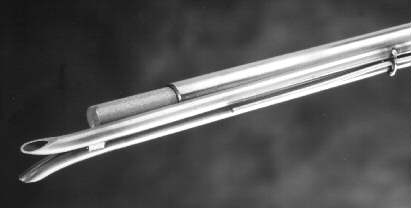
The EPA has established the need for the use of an effective moisture removal system to ensure comprehensive and accurate NOx and SO2 data.
Studies have clearly demonstrated that the NO2 component of NOx is significantly greater that what has generally been assumed. This is especially true in the monitoring of engine exhausts, and many low NOx burner configurations - which are playing an increasingly more important role in NOx RACT requirements and Ozone Control Strategies. NO2 can account for up to 45% of the total NOx emissions. Numerous independent studies have documented the superior performance of the permeation dryer (moisture removal) sampling system used in the ENERAC.
Energy Efficiency Systems offers the following two emissions probes for its Model 3000 series analyzers:
The probe uses a unique permeation dryer based design to remove excess water vapor from the stack. A coarse sintered Hastelloy filter mounted at the tip of the probe and a secondary disposable fine filter removes particulates. The probe includes an inconel sheathed thermocouple for measuring stack temperature. It is powered entirely by the Enerac's battery. The probe measures 4" x 6" x 2", weighs under 2lbs., and is stored in the Enerac case. Standard length is 12" and extends to 24". Other lengths are available on request.
A standard 10 foot long Viton hose and thermocouple extension connects the probe to the Enerac

This probe has all the features of the standard probe, and in addition it includes an integrated S-type pitot tube for the measurement of stack velocity. The standard 17" probe, which fits inside the Enerac case, easily detaches from the probe's housing and can be replaced with longer probe assemblies for maximum flexibility. The most advanced probe of its kind, the Mass Emission Probe uses a special microprocessor-based communication system to transfer data to the Enerac.
The Model 3000 Emissions Probes meets the requirements of 40 CFR 60 Appendix A, Method 6C.5.1.5; Method 7E.5; and Proposed Enhanced Monitoring Regulations 40 CFR 64, Appendix C Performance Verification Test Procedure (58 FR 54648).
The Model 3000 Mass Emissions Probe additionally meets EPA's 40 CFR 60Appendix A, Method 2, and 40CFR 75 for Mass Emission Rates measurements for NOx, SO2, and CO2.
A
Secondary Conditioner is available for stack gases containing excessive moisture.